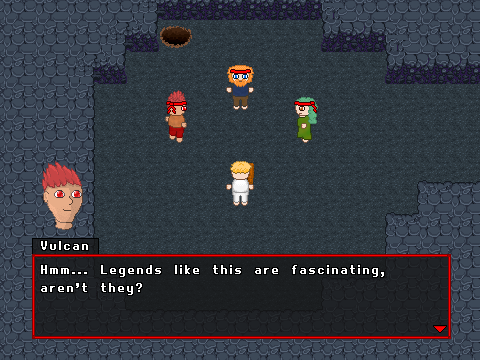Just as a reminder (to myself, mostly) that I’m still making good progress on Ambience, here’s ten things I got up to over the past month:
#1: Added randomly-generated quests. This turned out okay in the end, and in general it doesn’t do anything too stupid (like giving the player a Surefire Flower in exchange for a Surefire Flower – see below). I’m also still not sure if I should add story-related tasks to the in-game quest list, or if that’d make things too confusing.
#2: Improved the user interface and menu appearance. I wasn’t really happy with the UI in the above picture – to me it seemed a bit empty and disorganized with text just floating around. So I added some background boxes to compartmentalize it a bit and make it a bit more ordered (and nicer to look at – see the GIF a little further below). I also set a limit on the maximum length of the option boxes, so that they didn’t overlap with the info boxes at the right like in the screenshot above.
#3: Added some post-game content. I added a new sidequest where you collect pieces of a mythical whistle, the Skywhistle, for an itinerant piper. This allowed me to add some more dungeons, items, and even a few short bosses.
#4: Added lots of new items. Cloaks, swords, breastplates, potions… and of course, the aforementioned Skywhistle, which emits a piercing shriek when used and shoots quavers as projectiles.

#5: Added lots of new enemies: snakes, spiders, turtles, humanoid golems… you name it! (Me as I’m typing this: Wait, did I really add turtles to the game? Let’s see… oh, I did! I completely forgot to add them to the new dungeons I made! Oh, well, better do that now…)
#6: Added some new dungeons as well. This is where things became interesting. I started to play around with dungeon restrictions to make the experience more like a roguelike – for example, limiting the number of items the player can take with them into the dungeon, or temporarily reducing the player’s level to 1 for the dungeon. With those changes, Ambience really exhibits a greater range of flavors. The game transitions from a pleasant little dungeon-crawler in the early dungeons to a monstrous game of survival and chance in the post-game.
#7: In my downtime I spent a little while watching some YouTube playthroughs of Shiren the Wanderer and Pokemon Mystery Dungeon, two of my favorite roguelike-related franchises. It’s always interesting and useful to see how other people (especially professional companies) approach the roguelike genre and how they keep gameplay interesting, tell a story, etc.
#8: In the midst of my procrastination, I also watched a couple of scenes from Neon Genesis Evangelion (one of the very few anime series that I actually watch and kinda like). In the end, though, this turned out not to be completely unproductive – I got some excellent inspiration for a cutscene towards the end of the game, which I rewrote to be much darker and more psychological.
#9: Completed mugshots for all the main characters, including several minor characters. I don’t know why, but it always takes me ages to add things like mugshots, sprites, and dialogue for Foss, the scientist who’s studying the Ambiences. In any case, that’s all done now – phew!
#10: Finally, I changed some aspects of the game’s final boss, introducing a new area-of-effect attack and adding some particle effects and rumbling thunder to the introducing cutscene. I don’t really want to spoil too much, but suffice it to say that the boss fight is much more impressive and challenging as a result.


























